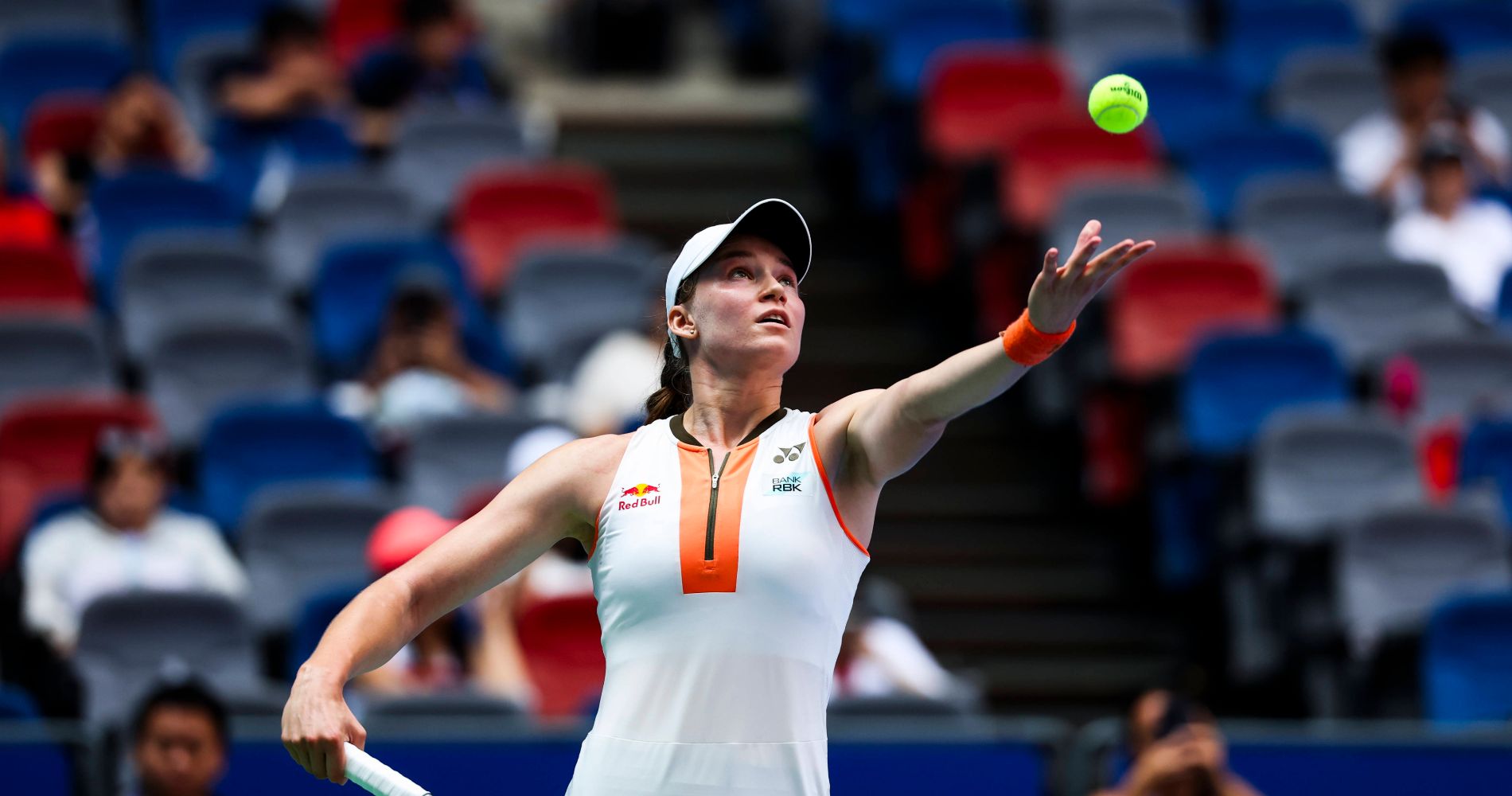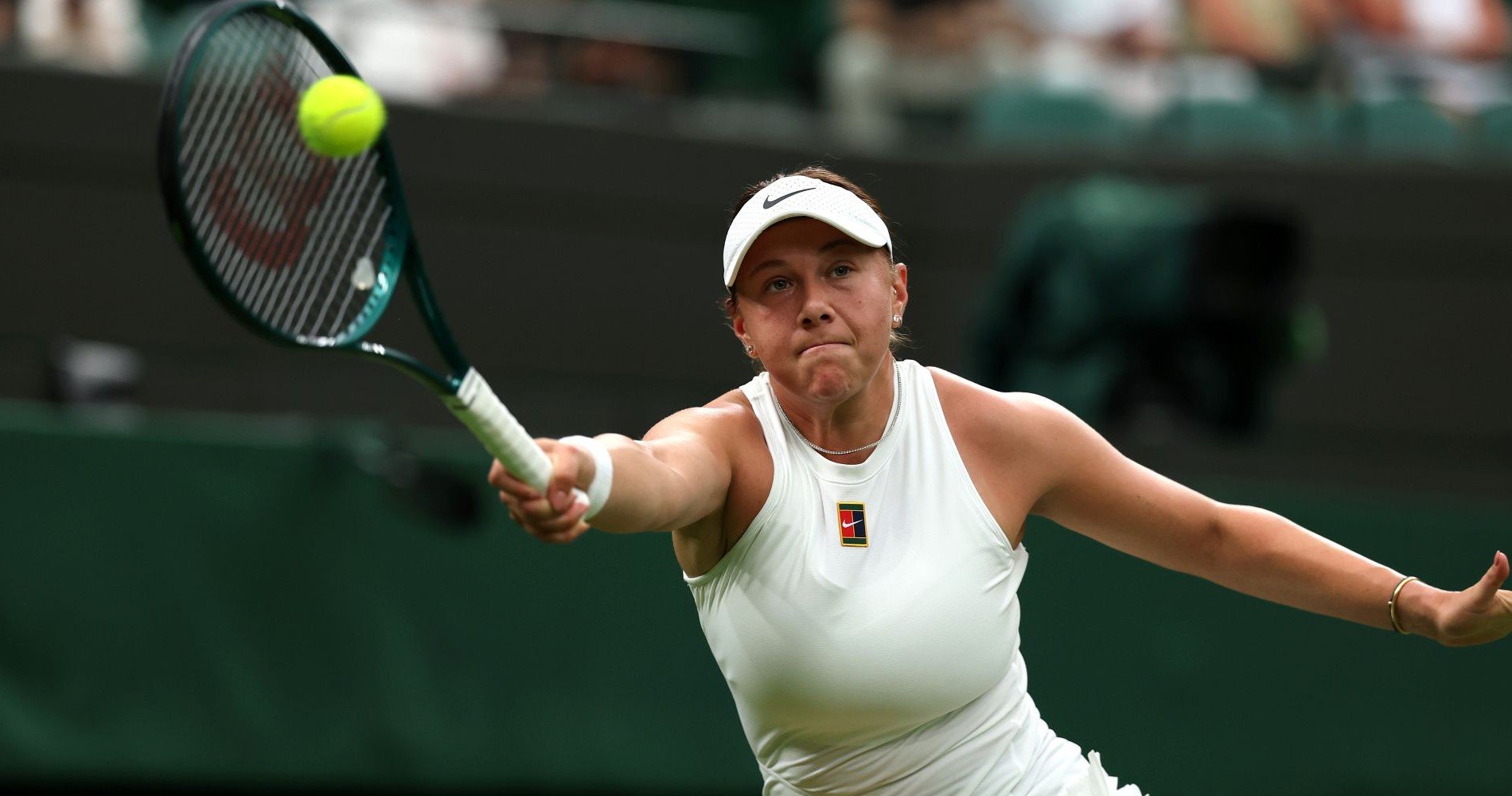WTA Finals 2025: The Global Stage where women’s tennis shines brightest
WTA finals return to Riyadh for another spectacle where the top eight players will face off in a competition.
 WTA Finals, iconic image 2025 | © Yumna Al-Arashi / WTA
WTA Finals, iconic image 2025 | © Yumna Al-Arashi / WTA
The last stop of the women’s tennis season is finally here. WTA finals return to Riyadh for another spectacle where the top eight players will face off in a competition that feels more like a celebration of another successful year. It’s a place where a year’s hard work is highlighted and judged among the best players in the world on the same world stage. The championship takes place in the first week of November, and by Sunday night one of them will lift the trophy and seal their claim to being the player of 2025.
The wta Finals, Where and When?
Riyadh hosts the Finals for the second straight year, with a singles draw of eight and a doubles draw of eight, on indoor hard courts, and a rich prize pot. The dates are set for November 1-8, right after the Asian swing, so the entire season funnels into this week. The stage is ready, the field is confirmed, and the WTA Finals Expert Picks and Predictions are afire with major champions, WTA1000 winners, and players who built their seasons on consistency.
The singles qualifiers are Aryna Sabalenka, Iga Swiatek, Coco Gauff, Amanda Anisimova, Jessica Pegula, Madison Keys, Jasmine Paolini, and the final entrant, Elena Rybakina, who clinched her place at the last moment during the fall run, with two alternatives who will jump in if something goes wrong in the top ten lineup, Mirra Andreeva and Ekaterina Alexandrova. In the finals there are no easy matches, and effortless draws. The pressure is running high on both sides of the net for the whole week, with every match bringing in drama where one point can decide the whole match. The Finals reward fresh form, confidence on hard courts, and the ability to handle short rest turnarounds after Asia.

This year we have no clear favorite. Every player has won either Grand Slams, or important WTA1000 titles which gives them the confidence to step out on the court with realistic chances to beat the opponent and grab the title.
Aryna Sabalenka
Sabalenka’s 2025 tells two stories at once. The first is power tennis at its purest, a WTA 1000 title in Miami, deep runs at multiple big events, and the ultimate hard court validation with her US Open title in September. She has the year’s best “serve plus first strike” package when it’s clicking, and the Finals reward exactly that. The second is the story of endurance. Even though Sabalenka had some devastating losses this year like losing finals at the Australian Open or in Indian Wells, she still managed to bounce back with unshaken mental strength and the most points in the standings. If her serve lands and the court plays quick, Sabalenka is the player to place a bet on WTA Finals and is the number one player to beat in Riyadh.
Iga Swiatek
Swiatek’s season took a turn on the green grass of London. She came into Wimbledon with modest expectations and left as champion, winning the most lopsided women’s final the event has seen in the Open era, 6-0, 6-0 over Amanda Anisimova. She also logged big wins during the summer and fall and arrived in Riyadh with the confidence of a player who has solved puzzles that used to be her weakest spot once. Indoors, where her first step acceleration and down the line forehand are flawless, she’s always dangerous. If she starts the round robin with a good pace on return, she can grind down even the biggest hitters across two sets.

Coco Gauff
Gauff returns as the defending champion and one of the players with a stellar season behind them. For many players, this could be the peak of their careers and the ultimate greatest year, but Gauff is only warming up. She captured her second major at Roland Garros in June, then added a hard court WTA1000 in China beating her fellow American Jessica Pegula.
The one theme that keeps following Gauff throughout the season is her comebacks into the spotlight just as everyone starts shifting their attention towards other players. Her speed turns defense into offense in a blink; her unpredictable serve and forehand have become match closing weapons, especially on hard courts. The Finals will bring out her competitive nature and fiery temperament on the center court.
She embraces the bright lights, plays her best after tight sets, and has proven she can beat any player in two sets. Gauff has made a huge leap this year by improving her game, physical form and mental toughness under pressure when it matters the most, launching her as the top contender in sportsbooks like Stake.com, where bettors are giving her great chances to repeat the success from last year.
Amanda Anisimova
Anisimova revived her career with two titles this year, from Doha and Beijing, and deep runs on the Slams with major upsets. The title from China might give us the best preview of what we can expect from Anisimova in Riyadh. Her first serve, fearless backhand, and the willingness to take the ball early are perfect for indoor courts with fast surfaces. She’s a first time qualifier, but her game has matured and her confidence is real. If she lands in a group where her return looks into second serves, she could run away with sets in a hurry.

Jessica Pegula
Pegula’s year reads like a blueprint for consistency. She added another tour title in Austin, posted finals at the biggest tournaments, and kept beating the players she was “supposed” to beat while mixing in wins over higher seeds. Her Wuhan run ended against Gauff, but it showed what makes her dangerous in Riyadh: clean strike zones, smart patterns into backhands, and one of the tour’s most dependable backhands off the baseline. Indoors, where bounce is loud and wind is zero, Pegula’s timing is a win. If the groups break her way and she can manage the physical load of three high stress matches in five days, a semifinal is absolutely within reach, and from there, her efficient point construction gives her a real shot at the title.
Madison Keys
Keys’ game took a sharp turn in January when she won against Sabalenka in the finals of the Australian Open. The title felt like a culmination of hard work spreading over several years and a new, fresh beginning that could jumpstart her career and sway attention to her game. When Keys is healthy and timing the forehand, she can play through anyone on the indoor courts. The challenge will be managing drops in focus that often brought her from a lead in the set of 3-1, to 3-5 in a matter of minutes leaving her distraught and scrambling to find her game again. If Keys comes out with a fast start in the match and a bold first serve, she could easily control the game against the top seeds and win the title.
Jasmine Paolini
Paolini’s breakthrough was Rome, where she became the first Italian woman in forty years to win the title, beating Coco Gauff in a final 6-4, 6-2. Also, in a strong doubles season alongside Sara Errani, Paolini learned how to manage pressure and stress on the court, control the points and close matches against the best players in the world. Indoors, her clean footwork and disciplined shot selection shine. She has a great pace and redirects it with short swings, flattening out the forehand and rushing even the biggest hitters. Paolini might not enter as the betting favorite, but she is absolutely a semifinal threat, and no one will want her in their group.
Elena Rybakina
Rybakina snatched the last spot in the Finals with the latest rush of great matches. The current No. 7 in the world is bringing in her best weapons forward, a powerful serve and cool head. She added titles in Strasbourg and Ningbo this year and reminded everyone that when she strings together free points on serve, sets disappear quickly. Indoors, her toss and contact point are rock solid, and her cross court backhand can pin anyone behind the baseline. The key for Rybakina in round robin play is maximizing the first set points by utilizing her serve and giving herself room to slam that backhand down the line.
How Does the Round Robin Format Shape the Week?
The WTA Finals split the eight players into two groups of four, where everyone plays with everyone with the top two from each group moving on to the semifinals. Players must adjust tactics based on opponents, manage recovery with short turnarounds, and maintain a good pace while saving energy. A single bad set won’t end a player’s week, but a single great tiebreak can shake up a group, swaying the momentum towards the smartest players who will reach the weekend.
For fans, the round robin is a treat because it gives matchups we don’t always see at major tournaments. There’s a variety where we can see rematches of this year’s biggest finals, packed with drama, suspense and top tier tennis.
Fans who are hunting for betting clues have plenty on their hands, so the best starting point would be to look for the most recent results on hard courts.
- Sabalenka’s US Open title carries the most weight because it happened on hard courts under maximum pressure, which is almost a straight line predictor for success at the Finals.
- Swiatek’s Wimbledon title is less about the surface match and more about confidence. Winning a first grass major after years of skepticism frees the shoulder on big points.
- Gauff’s Wuhan title is a direct line to winning the Finals. Fast hard courts coupled with late season fatigue can’t shake up one of the best players in the world.
- Anisimova’s Beijing run proves her first strike game holds up when the tour is at its most crowded with elite players, a hint that she won’t be fazed by heavyweights in group play. Pegula’s autumn was full of late round points. If she arrives rested, she has the cleanest timing of the field indoors.
- Keys’ Melbourne peak shows that she’s capable of stirring up the group, and when indoor courts play quick, her flat forehand can erase rivals’ defense.
- Paolini’s Rome title shows she can stay focused in short and long matches without losing pace, and Rybakina’s titles reveal a rhythm that tends to disrupt opponents’ game under a roof.
The Key Tactical Battles to Watch
Sabalenka versus Swiatek is going to make headlines. If Sabalenka lands sixty plus percent of first serves, she would tilt the match in her favor, but if Swiatek gets into backhand exchanges and drags rallies wide to Sabalenka’s forehand, she starts stacking errors. The margins are slim and the players know each other’s play very well, so the Finals this year will be a mix of good form, luck, focus, self confidence and mental preparedness.
Gauff’s matches hinge on the forehand under pressure. In 2025 she has shaped that shot smarter, using spin variation and height to buy time before striking flatter balls. Rybakina will be waiting for free points, waiting for rivals to make a mistake, and if Gauff starts getting impatient going into the forehand too early, the Kazakh player will take advantage of it.
The Mental Game
By late October, everyone is carrying some level of fatigue. The Finals are as much a mental test as a physical one. Players talk about “holding your level” for a full week while the field gets stronger each night. Winning the Finals often requires surviving one ugly match and winning one immaculate match, sometimes on back to back days.
Experienced players will give us a tennis spectacle and matches that could mark the season, while first timers face a heavy burden trying to prove their spot at the tournament.
So, what can we expect this year? Tight opening sets as players feel out the court speed and bounce. Indoors in Riyadh last year, the ball rewarded early contact but gave defenders enough time to strike back if the first one wasn’t precise. In that environment, returners who take time away, like Swiatek and Gauff, often start faster, while big servers like Sabalenka and Rybakina grow into the week as they find serving patterns that opponents can’t read.
The Finals are where styles and stories converge in one arena and remind us why women’s tennis is compelling. It is also where careers take the next step. A title here can jumpstart a No. 1 push in the new year, such as turning a promising season into a permanent seat at the throne. For the game itself, the Finals provide a billboard for what modern women’s tennis looks like: fast, tactical, physical, and global.










